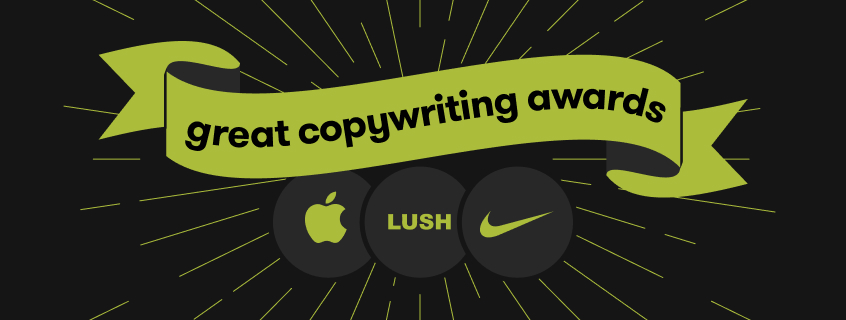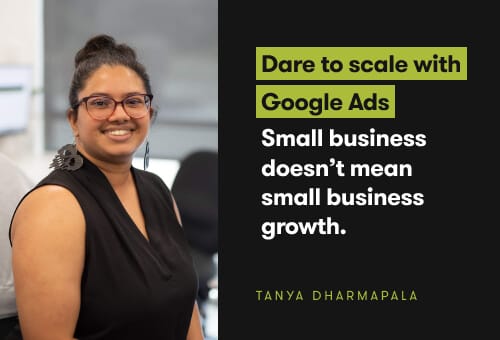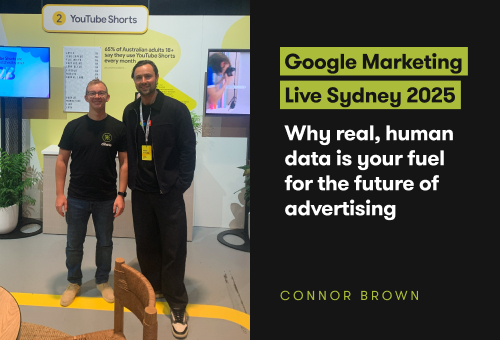
- Know your audience inside and out
- Set clear goals
- Create a strong structure
- Write impactful headings
- Keep it simple
- Focus on the benefits, not the features
- Tell them what to do (have a strong CTA)
- Don’t be afraid of edits
- Think about where you’re putting your words
- Be you (your brand)
- Tug at their heartstrings
- Check out these examples of great copywriting at work
The only step by step guide on how to write good copy you'll ever need

Writing good marketing copy is an art that combines creativity with strategic thinking. Effective copywriting can drive engagement, influence purchasing decisions, and significantly impact a business's success. Here are some essential steps to guide you in crafting compelling and effective copy.
- Know your audience inside and out
- Set clear goals
- Create a strong structure
- Write impactful headings
- Keep it simple
- Focus on the benefits, not the features
- Tell them what to do (have a strong CTA)
- Don’t be afraid of edits
- Think about where you’re putting your words
- Be you (your brand)
- Tug at their heartstrings
- Check out these examples of great copywriting at work
Know your audience inside and out

Understanding your audience is the foundation for writing copy that connects. To create content that truly resonates, you need to step into your readers' shoes and see the world through their eyes.
To connect with your target audience, you need a solid understanding of what motivates them. Know their interests, the challenges they face, and their goals to engage with them effectively.
By truly understanding your audience, you can craft messages that speak directly to their needs and desires.
- Create detailed customer personas: Create detailed profiles of your ideal customers. Give them names, ages, jobs, families and hobbies The more vivid and detailed your personas, the better you'll understand their needs and desires.
- Map out the customer journey: Visualise the path your customers take from discovering your brand to becoming loyal customers, and even brand advocates. You can do this by trying to understand their pain points, challenges, and motivations at each stage.
- Check out the competition: Look at what your competitors are doing. Identify the strengths and weaknesses of their copy. This can provide insights into what works and what doesn't in your industry.
- Listen to your customers: Pay attention to what people are saying about your industry and competitors.
By thoroughly understanding your audience, you can create copy that speaks directly to them, addressing their specific needs and motivations.
Set clear goals

Every piece of copy should have a clear purpose, whether it's to inform, persuade, entertain, or drive a specific action. Defining the purpose helps shape the message, ensuring that each word contributes towards achieving the desired outcome. Without a clear purpose, the copy can feel unfocused, fail to resonate with the audience, and ultimately miss its mark in delivering results. A well-defined purpose is the foundation for creating impactful and effective content.
- Identify the desired outcome: What action do you want your readers to take? Are you aiming for a sale, a lead, increased brand awareness, or something else? Be specific and measurable.
- Align with business objectives: Make sure your copy supports your businesses overall goals and values. Your copy should contribute to the bigger picture, and align with the business.
- Measure success: Determine how you'll track the effectiveness of your copy. What metrics will you use to measure success? Will it be clicks, conversions, time on page or something else? This will help you track the progress of your copy and make tweaks and changes to it that actually make a difference.
A clear goal keeps your writing focused and ensures that every word contributes to achieving that objective.
Create a strong structure
A well-structured piece of writing is like a building with a strong foundation; it guides readers seamlessly, making your content easy to follow and ensuring they gain maximum value from it.
- Start with a bang: Hook and drag your readers in with a strong introduction. This could be a surprising fact, a thought-provoking question, or a compelling story to open the copy with.
- Organise your ideas: Break down your main points into clear sections with headings and subheadings.
- Provide supporting evidence: Backup your claims with facts, statistics, or examples. This makes your content more credible and persuasive.
Create a satisfying conclusion: Summarise your main points and leave a lasting impression. A strong call to action can encourage readers to take the next step.
Write impactful headings

Your headings are the first things readers will see when skim reading a piece of copy, so make them count. Headings should be clear, engaging, and give a hint of what the reader will learn or gain in the content underneath them. Questions can be particularly effective as they pique curiosity and draw readers in.
- Be clear and concise: Tell people exactly what the heading preludes to.
- Use strong, active verbs: Make your headline pop with energy and excitement.
- Ask a compelling question: Spark curiosity and encourage clicks.
- Use numbers and lists: People love easy-to-digest information.
- Include relevant keywords: Help people find your content through search engines.
- Create a sense of urgency or scarcity: Make people feel like they need to act now.
- Highlight the benefit: Clearly communicate what readers will gain.
You can use subheadings under your main headings to further organise your copy, making the content more digestible and easier for the reader to navigate.
Keep it simple
Avoid jargon and complex language. Write in a way that is easy to understand. Short sentences and paragraphs make your content more readable and approachable. Remember, your goal is to communicate clearly and effectively.
- Use plain language: Avoid jargon and technical terms. Write like how you would talk.
- Short sentences and paragraphs: Break up long sentences for easier reading.
- Active voice: Use an active voice to make your writing more direct. For instance, say ‘We offer free shipping’ instead of ‘Free shipping is offered.’
- Avoid unnecessary words: Be brutal with cutting words and sentences. Delete unnecessary words or phrases that don't add any value to your message.
By keeping your copy simple and clear, you make it accessible to a wider audience and more effective in conveying your message.
Focus on the benefits, not the features
When discussing a product or service, highlight the benefits to the reader, not just the features. Explain how it will solve their problem or improve their life. This makes your copy more relevant and persuasive.
- Identify key benefits: What problems does your product or service solve?
- Use customer testimonials: Show how your product has helped real people with customer testimonials or case studies to build credibility with your audience.
- Paint a picture: Use descriptive language to paint a picture of how the product or service benefits the user. For example, instead of saying, “Our software is fast,” say, “Our software saves you time, allowing you to complete tasks in half the time.”
- Address pain points: Speak directly to the challenges your audience faces.
Focusing on benefits makes your copy more engaging and shows the reader the real value of what you’re offering.
Tell them what to do (have a strong CTA)

Guide your readers towards the next step with a clear and compelling CTA. Whether it's signing up for a newsletter, making a purchase, or contacting you for more information, your CTA should be direct and action-oriented.
- Be clear and specific: Tell people exactly what you want them to do.
- Highlight benefits: Explain what people will gain by taking action.
- Make it stand out: Use a clear button with large font or contrasting colours to draw attention.
- Test different CTAs: Experiment with different wording and placement to find what works best.
A strong CTA can make all the difference in converting readers into customers.
Don’t be afraid of edits
Good writing is rewriting. Review your copy for clarity, grammar, and style. Ensure it aligns with your brand voice and that every word serves a purpose. Don’t be afraid to cut out unnecessary information to keep your message sharp and focused.
- Get feedback: Ask someone else to review your copy.
- Check for errors: Proofread carefully for grammar, spelling, and punctuation mistakes.
- Cut unnecessary words: Keep your copy concise and impactful.
- Test different versions: Experiment with different headlines, CTAs, and phrasing to see what works best.
By thoroughly editing and refining your copy, you can ensure it is polished, professional, and effective.
Think about where you’re putting your words

Good copywriting considers where the content will appear. Different platforms and contexts require different approaches.
Website copy
Your website is your online storefront, where visitors come to discover who you are and what you offer. Your homepage should provide a concise, clear overview of your services or products. Strategically place links to your service or product pages within well-designed content blocks to guide visitors smoothly through your site.
Your service and product pages should focus on driving conversions, whether that's prompting a purchase or encouraging an enquiry. Highlight the benefits, not just the features—what problems does your product solve, and how does it improve life for your customers? And always include a strong call to action (CTA)—your straightforward invitation to ‘buy now’ or ‘learn more.’
Your blog section is a powerful opportunity to showcase your expertise and position yourself as a leader in your industry. It's also a valuable tool for attracting potential customers by addressing common questions, helping you reach those who may not yet be familiar with your brand.Keep it interesting, informative, and optimised for search engines (SEO). People love to learn, so feed their curiosity!
Social media
Social media is where you can be more casual in your approach (it it aligns with your brand).. Remember, it’s all about engagement. Keep your posts short, sweet, and shareable.
- Twitter: Quick, witty, and to the point.
- Instagram: Visual storytelling is key. Use eye-catching images and captions that tell a story.
- Facebook: A mix of everything – from fun posts to informative updates.
Email campaigns
People are more likely to open an email when they see it's relevant to them. Ensure your subject line grabs attention, and that the email content provides real value. Don’t forget to include a compelling CTA to guide recipients toward the next step.
Advertising
Ads are all about making an impacting a short amount of time. You need to grab people's attention fast. Highlight what makes you different and include a clear call to action.
Understanding the context in which your copy will be consumed ensures that it is effective and appropriate for the medium.
Be you (your brand)
Your brand voice is what sets you apart.
So, what's your brand's vibe? Are you fun and friendly, or serious and sophisticated? Once you've nailed it, make sure the entire team is across it.
Consistency is key. From your website to your social media, make sure your brand sounds the same across all your platforms and communications – yep, even internal ones! This helps people recognise and works to build trust.
It's okay to adjust your tone for different situations. For example, you can definitely be more casual on social media and more formal in emails.
strong brand voice creates a connection with your audience and contributes towards building a loyal following.
Tug at their heartstrings
Want to create copy that leaves a lasting impression? It's all about making people feel something. When you understand what makes your audience tick, you can craft words that send them straight to your customer list.
- Identify emotional triggers: Figure out what makes them tick. What do you want your audience to feel? Happy? Reassured? Excited? Nostalgic? Identify these and craft your copy around appealing to these.
- Tell stories: People are naturally drawn to stories because they evoke emotions, build connections, and make complex ideas more relatable. Even if someone can't directly relate to the details of the story, the underlying themes and emotions can resonate on a deeper level. Stories engage readers, making your message more memorable and impactful by humanising your brand, illustrating real-world applications, and fostering trust. By incorporating storytelling into your content, you can captivate your audience and leave a lasting impression.
- Use vivid language: Don’t just tell people it’s great; show them how amazing it is. Use vivid language that helps your audience visualise the experience or evoke emotions. For example, instead of saying, "Our product is great," say, "Our product adds joy and comfort to your everyday life." Create a sensory connection that resonates with them on a personal level.
By incorporating emotional appeal, you can create copy that resonates on a deeper level with your audience.
Check out these examples of great copywriting at work

Apple
Apple's ‘Think Different’ campaign is a clear example of storytelling done right. Instead of just listing product features, Apple highlighted the stories of iconic figures like Albert Einstein and Mahatma Gandhi, aligning these visionary personas with their brand. This campaign was successful in communicating Apple’s core values of innovation and individuality, deeply resonating with a wide audience by presenting a narrative that encouraged people to think outside the box.
Lush
Lush uses emotional appeal to hook and keep their customers coming back by creating vivid, sensory-rich descriptions of their products. Instead of merely listing ingredients, they craft narratives that transport the reader to a luxurious experience, making the audience crave the product. For example, describing a bath bomb with phrases like "soothe your soul" and "immerse in tranquillity" invokes a strong emotional response and desire.
Nike
Nike’s famous slogan “Just Do It” is a perfect example of using powerful, action-oriented words. This simple yet compelling phrase creates a sense of urgency and empowerment, motivating customers to take action. The campaign effectively addresses different audiences, from casual exercisers to serious athletes, and even steps into social and political arenas to resonate on a deeper level.
Qantas
Qantas uses storytelling to connect emotionally with its audience. The ‘Feels Like Home’ campaign features real-life stories of Australians returning home to their families. The ads showcase heartfelt reunions, emphasising the airline's role in bringing people together and making them feel at home. This approach creates an emotional bond with viewers, reinforcing the brand's image as a trusted carrier that cares about its passengers' experiences.
Thankyou
Thankyou, an Australian social enterprise, taps into emotional appeal by focusing on the impact of their products. Their copy highlights how purchasing Thankyou products helps fund life-changing projects for people in need. For instance, their water bottles come with messages like "This bottle gives one person access to water for two months," creating a strong emotional connection by showing the direct impact of a purchase. This strategy effectively motivates consumers to choose Thankyou products over competitors.
KFC Australia
KFC Australia used powerful, action-oriented words to turn a potential PR disaster into a win with their copy. When they faced a chicken shortage, their ad campaign featured a cleverly arranged “FCK” on a KFC bucket, apologising for the inconvenience. This bold and humorous approach not only addressed the issue head-on but also garnered positive publicity and reinforced the brand's playful and relatable image.
Ready to write copy that works?
Remember, the best copy is authentic and engaging. It speaks directly to your audience, reflecting their needs and desires while staying true to your brand's voice. Authenticity builds trust, while engaging content sparks interest and action. It’s not just about selling a product or service; it’s about creating a connection that resonates and leaves a lasting impression.
When your copy is both genuine and captivating, you don’t just attract attention—you inspire loyalty, drive conversions, and turn your audience into brand advocates. Ultimately, powerful copy is the fuel that propels your brand forward. Make every word count!
Subscribe to our Newsletter
RELATED BLOG

Generative Engine Optimisation (GEO): what is it, and how can you bake it into your marketing?

Mentor Marketing joins Dilate.

Generative Engine Optimisation (GEO): what is it, and how can you bake it into your marketing?














